#kamerawerk
Explore tagged Tumblr posts
Text

Christopher Williams
Fig. 7: Turning the exposure counter knob Exakta Varex IIa 35 mm film SLR camera Manufactured by Ihagee Kamerawerk Steenbergen & Co, Dresden, German Democratic Republic Body serial no. 979625 (Production period: 1960 - 1963) Carl Zeiss Jena Tessar 50mm f/2.8 lens Manufactured by VEB Carl Zeiss Jena, Jena, German Democratic Republic Serial no. 8034351 (Production period: 1967 - 1970) Model: Christoph Boland Studio Thomas Borho, Oberkasseler Str. 39, Düsseldorf, Germany June 21st, 2012, 2012
2 notes
·
View notes
Text
Zeh Zeca-Flex Camera
This camera combines the compactness of a folding camera with the quality and handling of a twin-lens reflex camera. The Zeh Zeca-Flex is just the camera mentioned above, and I've had my eye on it for many years. However, the rareness and price have always eluded me until I went into a great used camera store in Salt Lake City, UT, Acme Camera.
The first time I went into Acme Camera, they were in their older location, and the store was filled with photo knickknacks. I struck up a conversation with the people there who were selling used gear, servicing cameras, and renting for the local photo community. On my second visit, back in one of the cases was the Zeca-Flex I currently have. The camera was in excellent condition, with clean optics and a working shutter. I offered a trade for the camera, and they accepted. I was elated to have the camera so I could do a blog article on my Zeca-Flex.
History:
In the early 1900s, around 1901-1902, Paul Zeh produced camera parts like shutters in his workshop in Dresden for some of the other local camera companies in Germany. In 1913, he started producing cameras, and by 1922, the company Paul Zeh Kamerawerk was started. In the early years, the company mainly produced folding plate cameras or cameras that took images on glass plates, which was very common at that time period.
During the 1920s, the company did very well. At this time in photo history, roll film was starting to become more popular. The photographer or photo enthusiast didn't need to carry bulky film holders. All the photographer needed to do was put in a roll of film and get 8, 10, 12, or 16 different photos on the same roll of film without the hassle or inconvenience of loading and carrying the film holders.
The Pilot Reflex camera, produced in 1931 by Kamera-Werkstätten Guthe & Thorsch in Dresden, has a very similar style and appearance to the Perfekta and the Super Perfekta; you can see a review by Mike Eckman of the Pilot.
During the late 1920s and 1930s, the company expanded production into folding roll film cameras. These cameras were more compact and allowed the photographer to travel with less equipment, so their popularity grew.
By 1937, Zeh produced the Zeca-Flex, a folding, twin-lens reflex camera. Its design is very similar to that of the Welta Perfekta, which was produced in the 1933-34 timeframe, and the more robust Super Perfekta introduced in 1935. The Perfekta and Super Perfekta were made by Welta Kamera Werk, which was in Freital, a very close town to Dresden.
I'm confident Zeh wanted to compete with Welta on this camera style. Unfortunately, this camera style didn't catch on with consumers. Hence, with all three cameras, the Perfekta, Super Perfekta, and Zeca-Flex were the only cameras made and are rare and somewhat expensive.
WWII took a toll on Dresden as the Allies leveled the city due to its large manufacturing capabilities. By 1948, the Zeh plant closed, and the company went out of business. My guess is that some of the Russian companies took some of the camera manufacturing machines to produce some of the after-war cameras. This is just my guess, though.
My Camera:
The condition of my Zeca-Flex is unusually excellent for a camera that is almost 90 years old. The metal is still shiny, and all the functions move like when the camera was first purchased in the late 1930s.
The camera measures 7.5" long without the light hood open. When the light hood is open, it measures 9.25" tall. The Zeca-Flex is 3.75" wide and closed; it's 2.5" from the front of the viewing lens to the rear of the camera. When the camera is open, it measures 4.75". The Zeca-Flex weighs 2lb—5.2 oz.
The lens on my Zeca-Flex is a Schneider Xenar 7.5cm (75mm) f 3.5 in an F. Deckel Compur Rapid shutter. The shutter speeds go from 1/400 to 1 sec with both "T" and "B" settings. Since I don't have a proper shutter tester, all the shutter speeds sound accurate to my trained ear. The viewing lens is a Sucher Anistigmat f2.9 lens.
To open the camera, there is a small button on the left side as you hold it to take a photo. Press that small button in, and the lens door unlocks. On my camera, you need to pull out the lens to put it into the taking position. There are knurled grips on the sides of the lens door to pull the lens out. Also on the lens door is a flip-out stand that allows you to stand the camera up, which is very common in folding cameras.
To close the lens, there are two buttons on either side of the backdoor. You press in towards the camera body, then slide the lens back into it and close it until you hear the locking "click" sound, which means the lens is back and locked in the camera body.
On the back of the light hood, there is a sliding bar you slide over to open the light hood for viewing purposes, and on the side of the light hood is a switch you can flip up or down the magnifying glass for critical focusing.
There is a latch at the top of the back door, which you slide up to open the film door to load and unload film. In my camera, there is a roll film holder you put the roll of film into before putting it into the camera. The film holder is something I've never seen before, and on the first roll, I needed to figure out which way the film rolled across the shutter, but it was easy to figure out. Now that I've done it, it makes sense, and I won't have difficulty in the future.
The frame counter resets to number 1 when I close the back of my camera, or at least it was there when I put film in it. There is a button on top of the frame counter. When I slide that button over, the frame counter goes to number 5, so my guess is that isn't correct. I can't find an instruction manual for this camera online, so I'm not 100% sure of the correct way to get maximum frames from the camera.
There is a red window on the back, which I'll use in the future, as I did miss a few frames at the beginning of the roll when I shot with it. The film advance is on the bottom of the camera and is directly tied into the frame counter, whether you have film in it or not. The frame spacing on my camera was good once I got to the first frame and used the frame counter to find the next frame.
To focus the lens, as you hold the camera to take photos, there is a wheel next to the viewing lens. I rolled my finger across it one way or the other to achieve proper focus, which was the easiest and made the most sense to me.
Results:
Now that I had a roll of film in the camera, I took it out and walked around the neighborhood to get some photos. Here are some pictures I took on my walk with the stunning Zeca-Flex camera.
Conclusion:
The viewfinder wasn't the brightest, and achieving good focus was difficult even with the magnifying glass up. Another negative about using the camera is where the shutter release is placed. There is no shutter release button, so you need to cock the shutter and then release it with the shutter release button, which is in an awkward place and thought my finger would be in the photo, but it wasn't.
Besides these two items, the camera was a joy to shoot with, and I feel lucky that my camera is in such good condition. I will use it again, but I'm putting it back on the shelf and trying something different for next week's blog post.
Thank you for taking a few minutes to review some of the cameras in my collection.
Please be safe, and I hope to hear from you soon.
#Zecaflex#Zeca-Flex#Zeca-flex camera#german camera#cameras from Germany#TLR#Pseudo TLR Camera#folding camera#zeca#zeh camera#precision cameras#dresden#germany#schneider#schneider lens#schneider optics#120 camera#120 film#120 film camera#Medium format#6x6 format#acme camera
0 notes
Photo

#Pouva Die Karl Pouva KG war ein Fotounternehmen mit Sitz in Freital (Sachsen). Das Unternehmen produzierte zuerst einfache Diaprojektoren, und ab 1951 einfache Mittelformat-Kameras (für 120er Rollfilm 6x6), wie die Pouva Start. Deren Preis lag damals bei 16,50 Mark. Somit war mit dem Produkt von Karl Pouva Kindern und Jugendlichen ein erster Zugang zur Fotografie möglich. Für diese Zwecke ergaben sich akzeptable Ergebnisse, obwohl auf Grund des einfachen Objektivs, Duplar 1:8, gestaltet als Periskop-Objektiv, die Ausleuchtung des Bildes nur mäßig sein konnte. Die Farbfehler im Randbereich der Bilder waren dem einfachen Produkt geschuldet. Leicht abgewandelte Versionen der Pouva Start wurden in Lizenz in Polen, Ungarn und von Hama in der Bundesrepublik produziert und auf den Markt gebracht. 1953 kam der einfache Diaprojektor Pouva Magica aus schwarzem Bakelit hinzu. Dies war ein Projektor für 35-mm-Diafilme. Als Lichtquelle diente eine übliche 40-W-Allgebrauchslampe, auch mit Einfachwendel. Dieser Projektor wurde ungefähr 30 Jahre nahezu unverändert bis in die 1980er Jahre hinein produziert. Karl Pouva hatte auch ein einfaches Spulentonbandgerät mit der Bezeichnung Bändi entwickelt, das aber wegen der sehr ungleichmäßigen Bandgeschwindigkeit keine weite Verbreitung fand und deshalb weniger bekannt ist. Tonbänder vom Bändi konnten auf allen anderen Halbspurgeräten mit 9,5 cm/s Geschwindigkeit abgespielt werden – sie hatten die üblichen Standards. Die Firma Karl Pouvas wurde 1972 in Volkseigentum überführt und später der Kamera-Fabrik Woldemar Beier angegliedert. #Practika Praktica ist ursprünglich der Markenname für eine Baureihe von Spiegelreflexkameras des Herstellers Kamera-Werke Dresden-Niedersedlitz („KW“), der von Pentacon, Dresden-Striesen, übernommen wurde. Die in der DDR gefertigten Fotoapparate wurden auch ins Ausland exportiert und beispielsweise in Westdeutschland vom Versandhaus Quelle unter dem Markennamen RevueFlex verkauft. Insgesamt wurden von 1948 bis 2001 etwa 9 Millionen Prakticas produziert. (via #Wikipedia) #KarlPouva #Freital #Kamerawerk #Dresden #Fotoaparat #Kamera #camera #spiegelreflexkameras #DDR #GDR #Ostalgie #EastGermany (hier: Freital) https://www.instagram.com/p/CFgeQDvC1iy/?igshid=xtgixstn63dx
#pouva#practika#wikipedia#karlpouva#freital#kamerawerk#dresden#fotoaparat#kamera#camera#spiegelreflexkameras#ddr#gdr#ostalgie#eastgermany
6 notes
·
View notes
Photo

Am 25. Januar 2020 17:00 im Canva Blue im Rahmen der @sofilmfest wird unser Clip AU79 auf grosser Leinwand gezeigt. Kommt. Später noch an die Nomination ins Rennen für #bestswissvideoclip in der @kantine_attisholz. Daumen zücken! Mit dabei zumindest auf der Leinwand: @stereoluchs @moesanthill ESKIMO @pamelamendezmusic @yaobobbysimongrab @daysweareeven @jessiquoi_ @k_e_j_n_u @audiodope @annietaylorband @makalaxtrm @panda_lux_ @mimiks @bigzis2019 Danke tausend: Christian Witschi @kamerawerk_winterthur @majahuerst @claudio_sulser @oliverjordantewelde @fred_herrmann @thehitmill Milena Keller Miro Caltagirone Thomas Meyer Lara Studer Zia #béyond #AU79 #BigZis #BLONK #solothurnerfilmtage #comingup #bestswissvideoclip #Maja_Hürst #Fred_Herrmann #kamerawerk #HitMill #kantineattisholz #chrap #aiksthrix #GravidanerSimpel #OusiaAurant #swissmountains https://www.instagram.com/p/B7nSR_9gld6/?igshid=1li0b6hrcnb3l
#bestswissvideoclip#béyond#au79#bigzis#blonk#solothurnerfilmtage#comingup#maja_hürst#fred_herrmann#kamerawerk#hitmill#kantineattisholz#chrap#aiksthrix#gravidanersimpel#ousiaaurant#swissmountains
0 notes
Text

Adox-Kamerawerke (1956) in Wiesbaden, Germany, by Carlfried Mutschler
#1950s#factory#concrete#architecture#germany#nachkriegsarchitektur#nachkriegsmoderne#architektur#carlfried mutschler
90 notes
·
View notes
Text
Exakta Varex Ⅱa


Exakta Varex Ⅱa
with Nikkor-Q・C 1:3.5 f=13.5cm
35mm SLR with interchangeable waist level finder.
Interchangeable bayonet mount lenses.
1957 Ihagee Kamerawerk
#cameras #SLR #filmphotography #exakta #Nikkor #nikon#vintage #一眼レフ #フィルム #industrialdesign
6 notes
·
View notes
Link
Filmproduktion | Dokumentation | Werbefilm | Animation | Kameraverleih | Imagefilm | Eventfilm | Erklärvideo | Green Screen
0 notes
Photo

Camera EXA 1a
Produzida: Ihagee Kamerawerk AG Dresden
Ano de Fabricação: 1964
#exa#exakta#exa1a#ihagee#dresden#analogic film#analog film#analog camera#analog photography#film photography#Film lover#camera
6 notes
·
View notes
Text
Portraiture Through The Ages
In the 1940′s, camera technology wasn't as advanced as it is to this date, however within this time period, camera technology was considered the most advanced of its time period.
Beginning with the lowest of the low, we have the Kodak Brownie Flash Six-20...

The brownie box, being sold at $6.00 which was introduced in July 1946, is made from a metal box body, with a strange shape. It features an optical direct vision finder, a built-in closeup lens, and time exposure capability. It also accepts a cumbersome flashgun.
The Brownie Flash Six-20 camera was quite a popular camera in its time because of it's indestructibility, taking the place of the modern-day compact or cell phone camera in terms of market penetration.
This camera now sells for around $20-$30.
Up from this, we have the cheap folding cameras like the Agfa Isolette/Ansco Speedex.
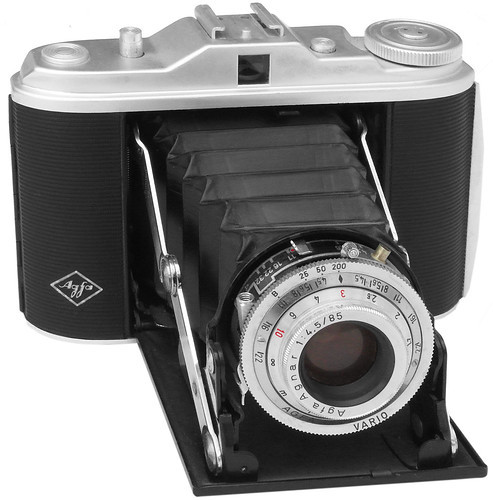

There are two models of the Agfa Isolette, The early model, produced before and during WW2 and the later, produced after WW2. This camera, made by Agfa Kamerawerk AG, Munich, Germany, was named the ‘solders camera’ or ‘Soldatenkamera’. There were many different lens/shutter combinations to this camera, making it impressive in its time period.
The late model was made from 1946 till 1950 with the name writing as Jsolette or Isolette. The camera offered many different lens/shutter combinations, like f/4.5 Agnar, Apotar or Solinar lenses and Prontor, Prontor-S or Compur-Rapidshutters.
This camera costed around $15 back then, but are now sold for around $100-$500.
The Ansco Speedex camera was introduced in early 1940. The camera is labeled on the front as a Agfa B2 Speedex with a 85mm f/4.5 lens. It was actually made in Binghamton, NY when Ansco and Agfa merged. There are no interlock which prevents double exposures.
It is unknown its original price, but it is however sold for around $30-$70 modern day.
We next have the next technological progression, the high-end folding cameras. Equipped with the occasional rangefinder, these devices were even more expensive but were equipped with advanced lenses and shutters. The Kodak monitor 620, is a prime example of these types of cameras.

This camera was introduced between 1939 and 1948, originally sold for $48.50, now selling for around the same price. The camera has advanced features such as an automatic frame counter, double exposure prevention, an uncoupled depth of field scale, and dual viewfinders. This camera was extremely well produced and still is capable of capturing amazing images.
The Leica and their various camera models had produced photojournalism cameras for the international market since the early 1930′s and showed to be productive and effective on the market.

The Leicia IIIc was introduced 1940–1951. This was and still is a very valuable camera model, selling now for around $700-$1000, It was said to have took up 5% of the professional photography market.
Perhaps the most recognisable and famous most used camera of that time was the press cameras, the huge boxy cameras with the wireframe finders and flashbulbs.

These camera targeted 90% of the newspaper photography market 9 out of ten photographers who worked for news agencies chose Graflex models, one of the most popular brands of that time along side Busch (as shown in this image).
These were sold roughly for $3000 alongside with accessories and other gear. These cameras were the best of the best with the manufacturers pulling out all the stops to produce solid press cameras.
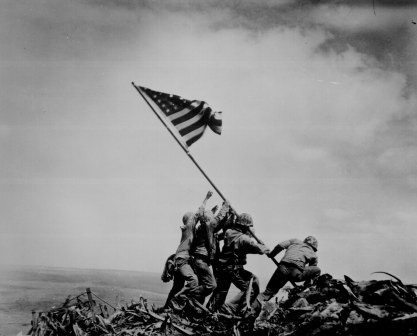
This is an iconic image taken on a Graflex by Joe Rosenthal.
Photographers in the 1940′s

Carl Mydans prepared himself from an early age for his lifelong involvement with journalism. Between 1940 and 1944, Mydans and his wife Shelley Mydans were in Asia, first covering Chungking in its stand against the Japanese bombings, then in Burma, Malaya and the Philippines. While in the Philippines they were both captured by the Japanese and imprisoned for 21 months. This, however, did not deter Mydans, as he went on to photograph many more wartime situations after his release. Mydans recorded photographic images of life and death throughout Europe and Asia during WW2 travelling over 45,000 miles.
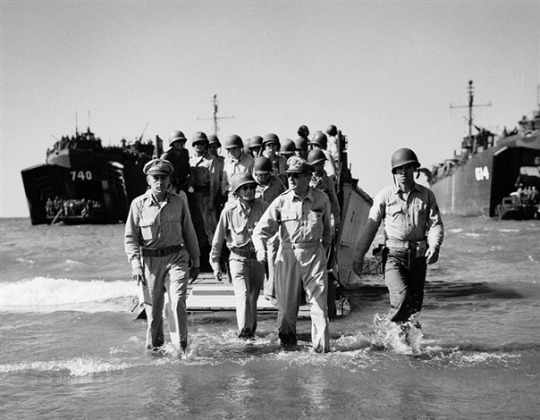
General Douglas MacArthur Landing at Luzon, Philippines, 1945. ‘Blue Beach’, Dagupan, Island of Luzon, Lingayen Gulf, Philippines.

Casualties of a mass-panic during a Japanese air raid in Chongqing in 1941.
Joe Rosenthal spanned more than 50 years, he is best known for a single image: Raising the Flag on Iwo Jima.
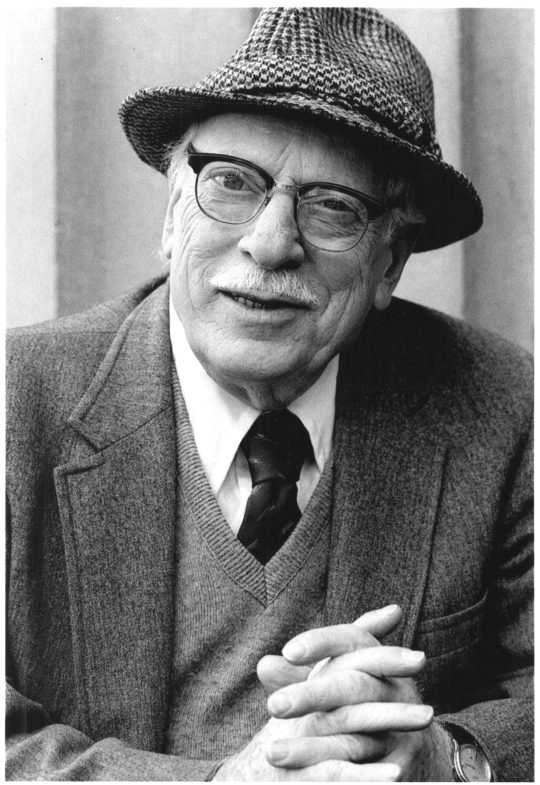
The photograph of six men on a tiny island in the Pacific was immediately a symbol of victory and heroism, and became one of the most famous, most reproduced and even most controversial photographs of all time.

Flag Raising on Iwo Jima, 1945.

U.S. Marines of the 28th Regiment, fifth division, cheer and hold up their rifles after raising the American flag atop Mount Suribachi on Iwo Jima, a volcanic Japanese island, on Feb. 23, 1945 during WW2.
Toni Frissell trained as an actress and worked in advertising before devoting herself to photography.

Frissell had a major contribution to fashion photography in the 1940′s.
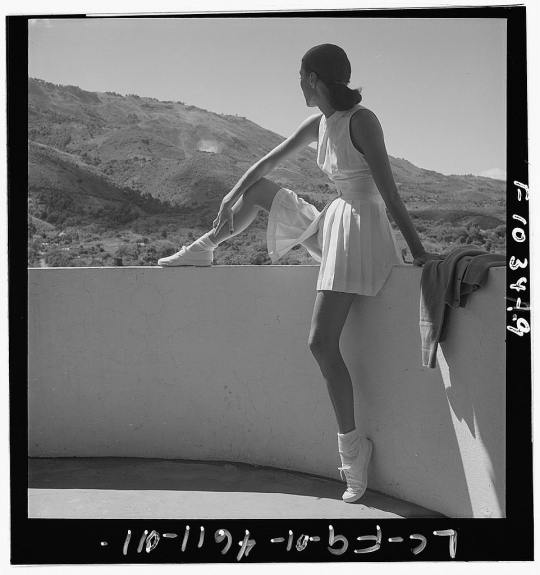
Woman wearing tennis outfit, seated on wall. Toni Frissell. 1947 Febuary.

Eleanor Roosevelt talking with woman machinist during her goodwill tour of Great Britain. Toni Frissell. 1942 November.
Henri Cartier-Bresson is a French photographer, a well-known figure in the history of photography during WW2. His work of spontaneous photographs helped establish photojournalism as an art form.
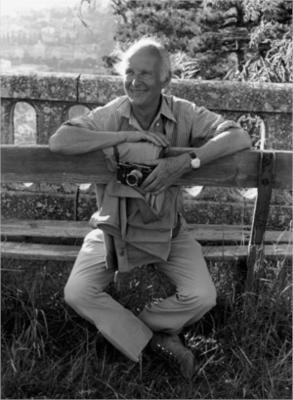
He was imprisoned by the Germans in 1940 during the Battle of France and spent 35 months subjected to forced labour in prisoner-of-war camps until, after several failed attempts, he escaped in 1943.

Germany, WW2, Henri Cartier-Bresson 1945.
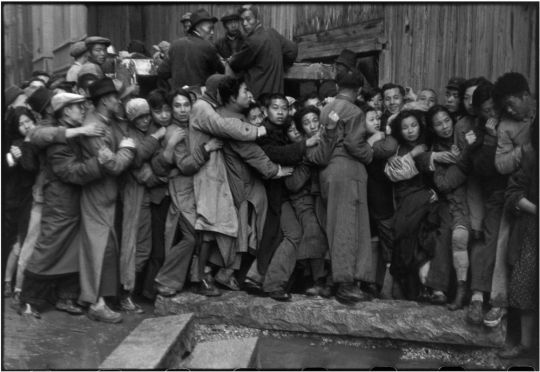
Crowd waiting outside a bank to purchase gold during the last days of the Kuomintang, Shanghai, China, December 1948.
A fair amount of photographers during the 1940 period relied on documentary styled images, documenting the drastic happenings of that period of time, until In the period after WW2, as the United States entered a period of domestic peace and prosperity, many photographers there moved away from documentary style photography and focused instead mostly on the intrinsic qualities of photography.
3 notes
·
View notes
Text
In obscura espionage definition

The second factory where he built his cameras was located in Fort Lee, New Jersey. Semmendinger first made his cameras in New York City. Paul Getty Museum, gift in memory of Beaumont NewhallĪugust Semmendinger (1820 – August 6, 1885) was a manufacturer of photographic apparatuses and the inventor of the Excelsior Wet Plate Camera. Paul Getty Museum, Los Angeles, Gift of Gloria and Stanley Fishfader This display explores the evolution of the camera through the Museum’s collection of historic cameras and photographs. Flexible film stocks, built-in light meters, motor drives, and megapixels are a few of the advancements that have transformed the way this ingenious device captures and preserves a moment in time. Once a simple wooden box with a primitive lens and cap for controlling light, the modern camera has undergone enormous change since its invention in the early nineteenth-century. Please click on the photographs for a larger version of the image. Paul Getty Museum for allowing me to publish the photographs in the posting. How does the physicality of the camera, from large format to iPhone, affect how we hold the machine, how we interact with it’s ontology and enact its rationale – in particular perspectives of abstraction, becoming, existence, reality, as well as the basic categories of being and their relations: Substance, Relation, Quantity and Quality Place, Time, Situation, Condition, Action, Passion? How have digital cameras altered how we use the camera and how we see the world, moving us from a viewfinder and vanishing point, to looking at a flat screen on the back of the camera? How does the camera impart its own reality, and how, through looking, do photographers understand how different cameras impart different realities? How do we intimately see what the camera sees, without looking through the machine? How can a box of metal and glass, a machine, capture onto film and pixels, something that so transcends time and space that, at its best, it preserves the spirit of our existence, the condition of our becoming? Although I love the design of the old cameras – when viewed from the outside, through the media images, the exhibition seems to also be a bit of a filler from the Getty. A filler posting from me as I am sick at the moment. © Estate of Lisette Model, courtesy Baudoin Lebon/KeitelmanĪpologies. Lisette Model (American born Austria, 1901-1983) Collins Kodak Ektra Camera, Kodak, Kodak Bantam Special, Kodak Ektra Camera, Kodak World War II "Matchbox" Spy Camera, Lisette Model Weegee New York, Mammoth Plate Wet-Collodion Camera, Man Ray, Man Ray Self-Portrait with Camera, Nikon, Nikon "Reporter" large load 35mm camera, Photographer at a Fire, Photographing New York City, Photographing New York City - on a slender support 18 stories above pavement of Fifth Avenue, polaroid, Polaroid Corporation, Polaroid Land Camera Model 95, Polaroid SX-70, Portrait of Dorothea Lange, self-portrait, Self-portrait preparing a Collodion plate, Self-portrait with camera, Self-Portrait with Grandchildren in a Funhouse, Steineck ABC Wristwatch Camera, Steineck Kamerawerk, The Kodak, The Photojournalist, Underwood & Underwood, Underwood & Underwood Photographing New York City, Weegee, Weegee New York, Weegee Photographer at a Fire, World War II "Matchbox" Spy CameraĮxhibition dates: 30th July 2019 – 5th January 2020 Horatio Ross Self-portrait preparing a Collodion plate, Daguerreotype camera, Daguerreotype/Wet-plate Camera, Eastman Kodak Company, Eastman Kodak Company Kodak Bantam Special, edward weston, Edward Weston Self Portrait with Camera, Extras with Film Cameras, George Watson, George Watson Camera on 12-foot Tripod, Hasselblad, Hasselblad wide angle camera, historic cameras, history of cameras, Imogen Cunningham, Imogen Cunningham Self-Portrait with Grandchildren in a Funhouse, In Focus: The Camera, In Focus: The Camera J. Tags: Alma Lavenson, Alma Lavenson Self-Portrait, Andreas Feininger, Andreas Feininger The Photojournalist, Anthony Friedkin, Anthony Friedkin Extras with Film Cameras, Arthur Fellig, August Semmendinger, August Semmendinger Mammoth Plate Wet-Collodion Camera, Camera box, camera machine, camera obscura, Camera on 12-foot Tripod, cameras and photography, Canon, Canon S 35mm camera with rare F2 lens, Capt. Categories: black and white photography, digital photography, documentary photography, exhibition, gallery website, light, memory, photography, portrait, psychological, reality, space, time and works on paper

0 notes
Photo

Die Penti II (eigentlich Pentacon Penti II) war die goldene Kamera der DDR. Gebaut wurde diese Kamera nach den Zusammenschluss ab 1961 in dem VEB Kamera & Kinowerk Dresden. Durch die hohe Qualität in der Herstellung und der verwendeten Materialien, war dies ein Spitzenprodukt in der Fotoindustrie der DDR. Dadurch war die Pentacon Penti II für den Export bestens geeignet. Zu den Besonderheiten dieser Kamera gehörte das Schnellspannsystem zum Transportieren des Filmes. Wird der Auslöser ausgelöst, springt eine Schubstange auf der linken Seite der Kamera heraus, durch drücken der Schubstange wurde der Film weitertransportiert und Auslöser neu gespannt. Das Gehäuse ist aus Metall gefertigt und liegt gut in der Hand. Die Pentacon Penti II wurde in unterschiedlichen Farbkombinationen ausgeliefert. Diese Kamera wurde sehr erfolgreich in West-Deutschland verkauft. Hier wurde die Penti II als "Kamera für die elegante Dame" beworben. Durch die hohe Qualität der Kamera wurde die Pentacon Penti II auch als Geschenk bei Auszeichnungen staatlicher Organe der DDR verwendet. Und erhielt den Zusatz " die Goldene". Die Penti II bekam auf der Leipziger Messe 1965 sogar eine Goldmedaille, was für Pentacon oft mit der Zuweisung von Valuta für wichtige Einkäufe verbunden war. Die Penti 2 kostete in der DDR ca. 155.- Mark. (via https://www.lutz-scholz-fotografie.de/kamera-museum/welta-kamerawerke/welta-penti-ii/) #Penti2 #Penti #Kamera #camera #Fotoaparat #VEB #Pentacon #Dresden #DDR #GDR #Ostalgie #EastGermany (hier: Dresden, Germany) https://www.instagram.com/p/CC0k050CSqj/?igshid=914xm10do65u
4 notes
·
View notes
Photo

Ab heute erhältlich béyond zum chaufe, lose odr chlaue: iTunes ect: https://lnk.site/beyofd Bandcamp: https://bigzis.bandcamp.com Soundcloud: https://soundcloud.com/bigzis/sets/beyond-1 Danke @fred_herrmann @majahuerst @ronamariaz #hitmill #BLONK @saschabusy #OnaPinkus #PopkreditStadtZürich #AppenzellAusserrhoden #kamerawerk Grrr #aiksthrix #GravidanerSimpel #OusiaAurant #béyond und alle jene, welche... love from Zis https://www.instagram.com/p/BuLe4aTg2yp/?utm_source=ig_tumblr_share&igshid=3v4jat85w8mc
#hitmill#blonk#onapinkus#popkreditstadtzürich#appenzellausserrhoden#kamerawerk#aiksthrix#gravidanersimpel#ousiaaurant#béyond
0 notes
Photo

Die Penti II (eigentlich Pentacon Penti II) war die goldene Kamera der DDR. Gebaut wurde diese Kamera nach den Zusammenschluss ab 1961 in dem VEB Kamera & Kinowerk Dresden. Durch die hohe Qualität in der Herstellung und der verwendeten Materialien, war dies ein Spitzenprodukt in der Fotoindustrie der DDR. Dadurch war die Pentacon Penti II für den Export bestens geeignet. Zu den Besonderheiten dieser Kamera gehörte das Schnellspannsystem zum Transportieren des Filmes. Wird der Auslöser ausgelöst, springt eine Schubstange auf der linken Seite der Kamera heraus, durch drücken der Schubstange wurde der Film weitertransportiert und Auslöser neu gespannt. Das Gehäuse ist aus Metall gefertigt und liegt gut in der Hand. Die Pentacon Penti II wurde in unterschiedlichen Farbkombinationen ausgeliefert. Diese Kamera wurde sehr erfolgreich in West-Deutschland verkauft. Hier wurde die Penti II als "Kamera für die elegante Dame" beworben. Durch die hohe Qualität der Kamera wurde die Pentacon Penti II auch als Geschenk bei Auszeichnungen staatlicher Organe der DDR verwendet. Und erhielt den Zusatz " die Goldene". Die Penti II bekam auf der Leipziger Messe 1965 sogar eine Goldmedaille, was für Pentacon oft mit der Zuweisung von Valuta für wichtige Einkäufe verbunden war. Die Penti 2 kostete in der DDR ca. 155.- Mark. (via https://www.lutz-scholz-fotografie.de/kamera-museum/welta-kamerawerke/welta-penti-ii/) #Penti2 #Penti #Kamera #camera #Fotoaparat #VEB #Pentacon #Dresden #DDR #GDR #Ostalgie #EastGermany (hier: Dresden, Germany) https://www.instagram.com/p/CC0k050CSqj/?igshid=17g9kocv7zs7y
4 notes
·
View notes
Video
vimeo
Our reality is a dance between delusion and truth. Where does the dream stop and the memory start? An experimental short film featuring the snowboarding of Severin van der Meer and friends. Director: Alexander Tank DOP: Willem Jones Photographer: Silvano Zeiter Production: Hillton Producer: David Bertschinger Karg Co-Producer: Severin van der Meer Snowboarders: Severin van der Meer, Lars Popp, James Niederberger, Christian Haller, Gabrielle Torriani, Nicolas Wolken, Lucas Baume, David Djité, Arthur Longo Old Man: Kurt Herzog Additional Camera: Jake Price, Olivier Gittler, Alexander Tank Colorist: Samuel Muff Grading Studio: SLGH Zurich VFX House: Das Alte Lager VFX Supervision: Robin Disch Edit: Alexander Tank & Max Neumeier Editing Assistant: Lou Staub Title Design: Boris Stoll Music: Midnight Music «Windwalkers», Pablo Nouvelle «Chroma», Fabian F. Fuchs «Cirque Chromatique», Holograms «Monolith» Music Supervision: Florent de Maria Voice Over: Yumna Al-Arashi Sound Design & Mix: Robert Büchel Sound Studio Jingle-Jungle Sponsors: Ride Snowboards, FW Apparel, Doodah, Laax Supporters: Octamas, Cinegrell, Kamerawerk, SLGH, Jingle-Jungle Studios
0 notes
